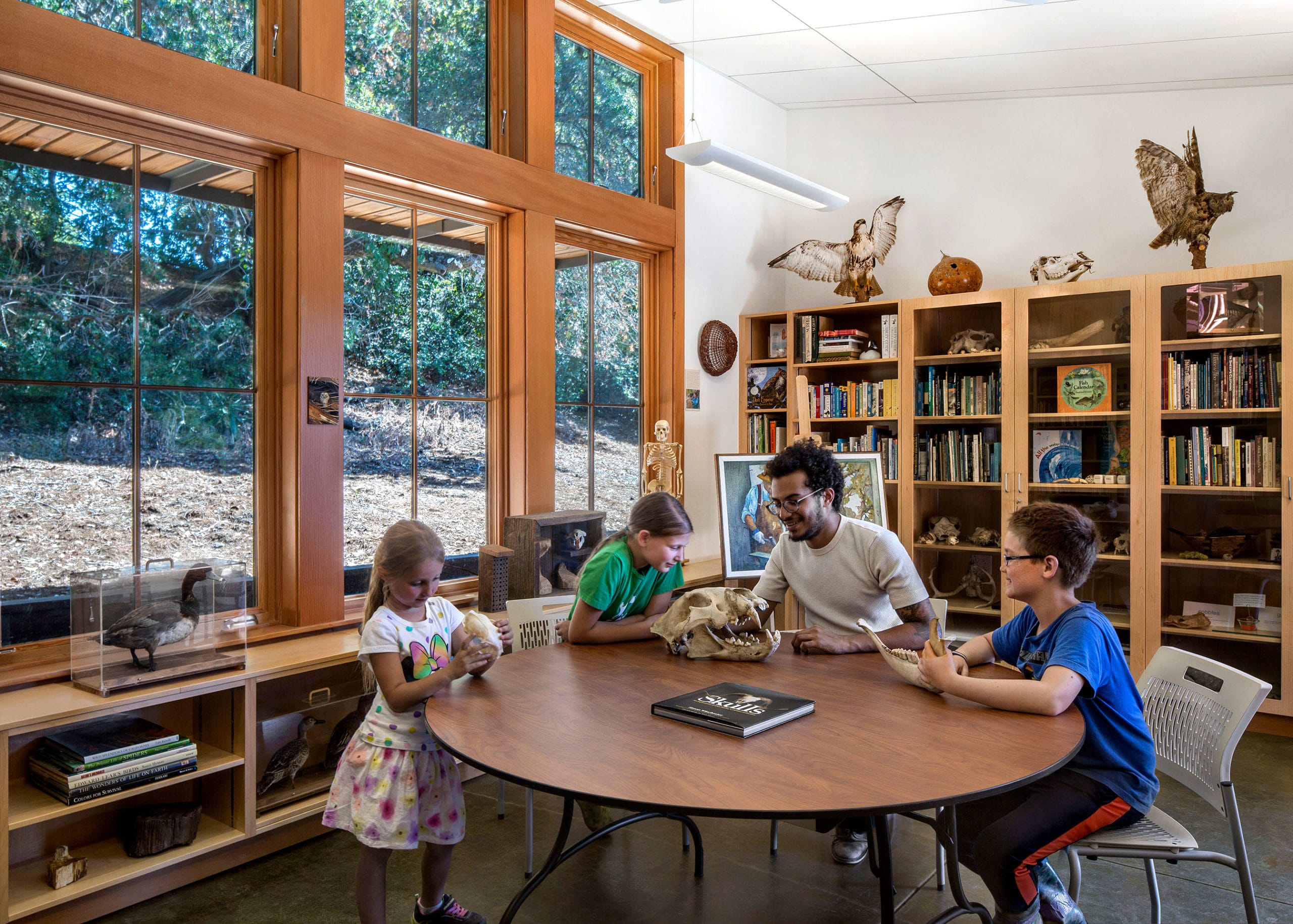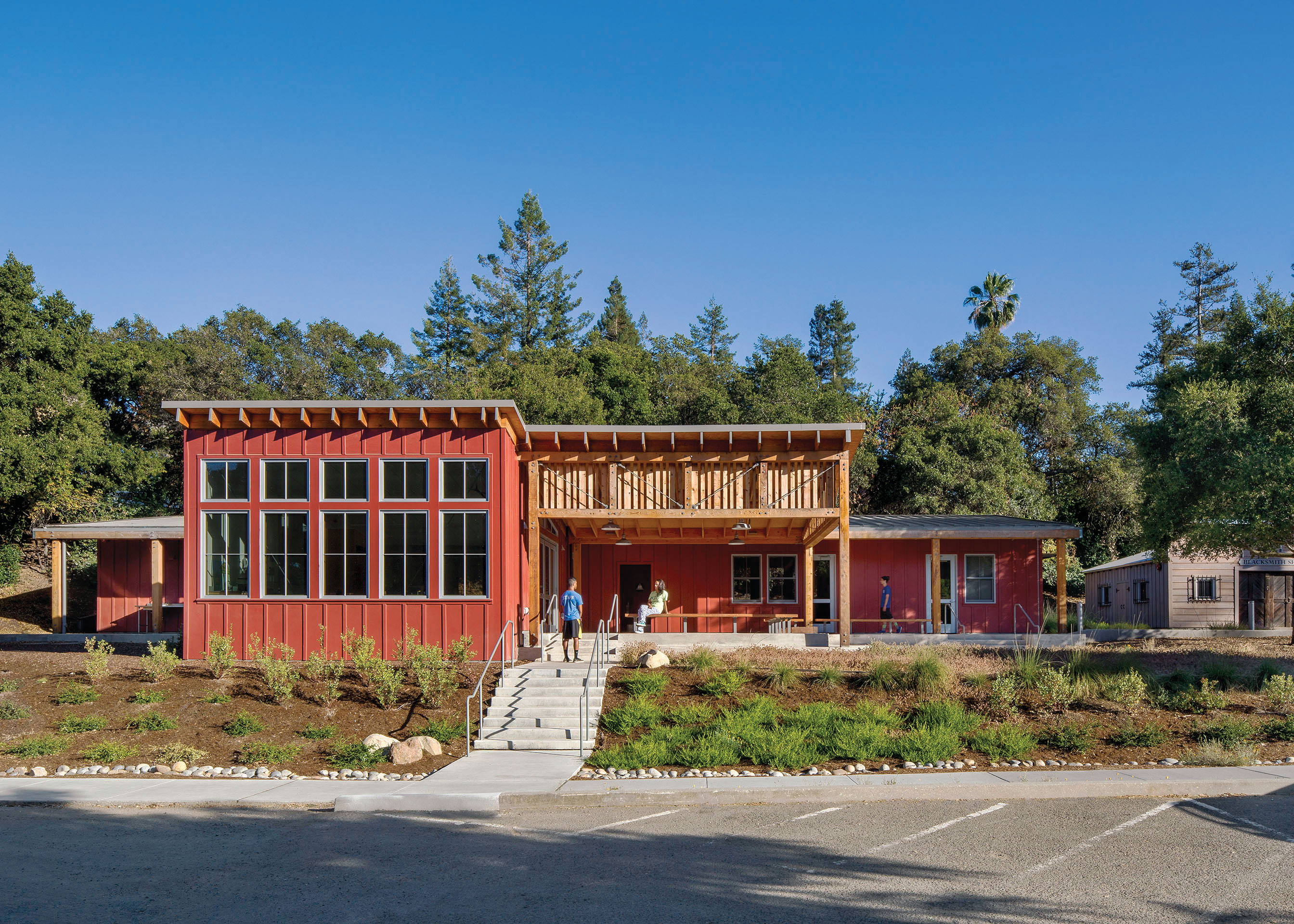
The 18 acres that make up the ranch combine historic buildings like a livestock barn with a new environmental education center. [Photo: David Waklely]
McClellan Ranch Preserve By the Numbers
According to a 2012 Harvard Business School study, public investment in LEED-certified government buildings stimulates local economies, creating a near doubling effect in private investment.
As of 2013, 47 states in the U.S. have energy efficiency requirements for state-owned or funded public buildings that go beyond the state energy code. The LEED Silver certification, required in 16 states, is the most common mandate for public buildings.
More than 800 state government projects, more than 2,600 local government projects, and more than 1,800 K-12 projects are currently LEED certified.
The World Green Building Trends 2016 report by Dodge Data & Analytics finds green building activity in institutional buildings across the world—schools, hospitals, and public buildings—is expected to meet and surpass green building projects in other existing structures by 2018.
Henry Siegel, principal in charge, of Siegel & Strain Architects, admits the McClellan Ranch Preserve project was smaller than the work his firm normally takes on. But the passion of the city of Cupertino, California was infectious.
“The city was really committed and had strong green goals,” Siegel says. “They had done a lot already to preserve park land and use it for environmental education. In fact, when we first went out to the site, they had groups of kids doing field studies and taking water samples right then. It’s a pretty inspiring program.”

Natural light fills classrooms, the library, and offices. [Photo: David Waklely]
This was an inspiring program in a landscape with an inspiring history, the team at Siegel & Strain quickly realized. The 18-acre parcel had been agricultural for decades, since at least 1870, before the city purchased it in the 1970s. The site already housed the original preserved ranch home, milk barn, livestock barn, and several transplanted buildings—a replica of a blacksmith shop and an old water tower. With so much history already commanding attention in the landscape, the proposed environmental education center had to work in concert while defining itself as a modern facility with a sustainable focus.
Siegel & Strain, with more than 20 years of sustainable building design experience, knew just how to approach a project like this. “It was a small project with a small budget. So we knew what was really most important was to get the basics right. We started where we always start. We asked ourselves, ‘How do you design a building as if it was unplugged?’”
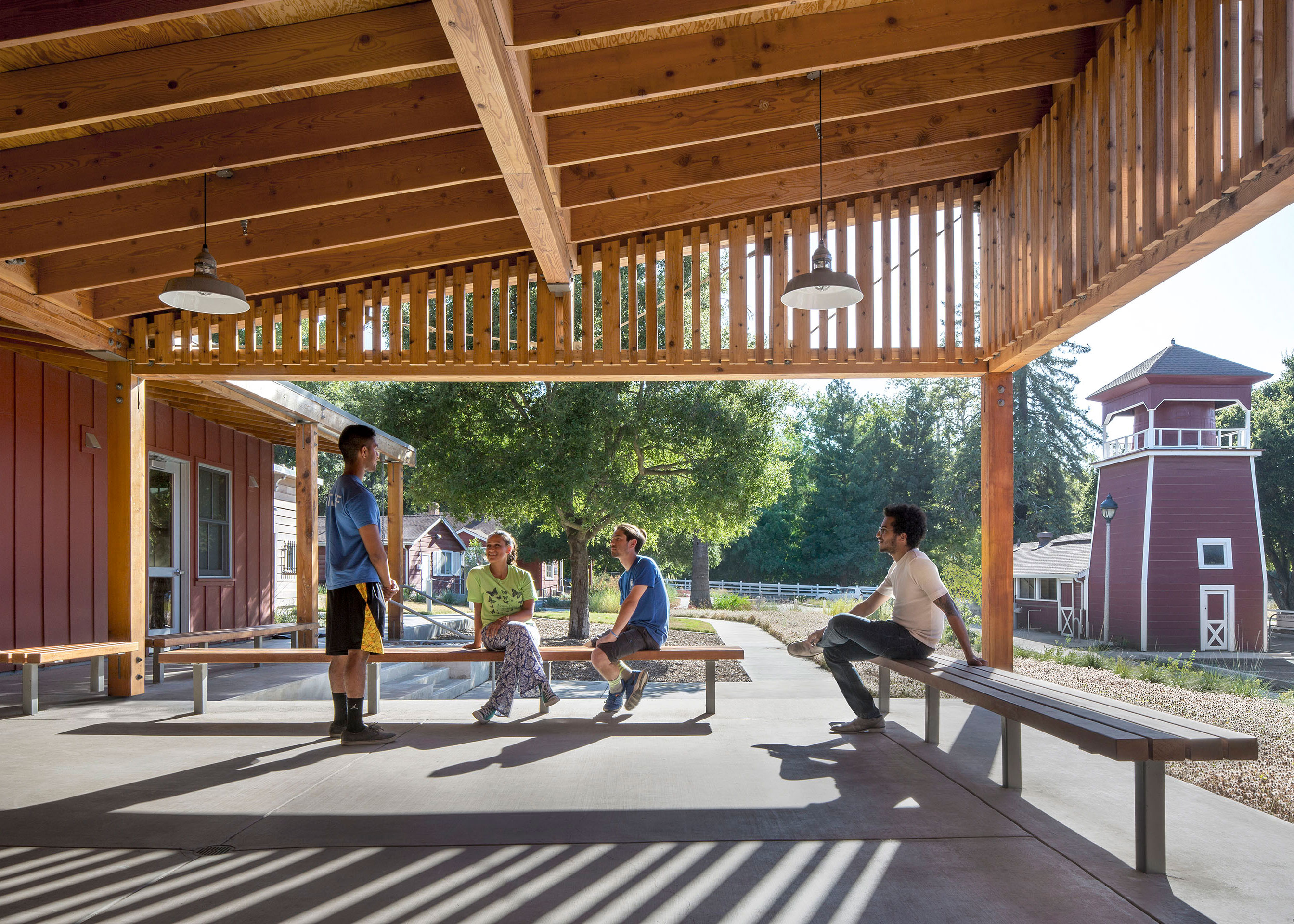
[Photo: David Waklely]
They began with assessing potential orientation, gauging daylight, and finding natural shading in order to come up with the best system for interior cooling—a big factor in an area of California known for its heat. The building’s envelope was also critical.
These concerns, and a limited budget, necessitated one of the building’s most unique design features—its “L” shape. “We decided the best way to keep air conditioning costs down was to put as much of the circulation of air into the rooms themselves. That meant no hallways. To get from one room to another, we used covered outdoor space.” This choice also helped keep lighting costs down. No hallways meant each classroom, the library, and the offices would have natural light on three or four sides.
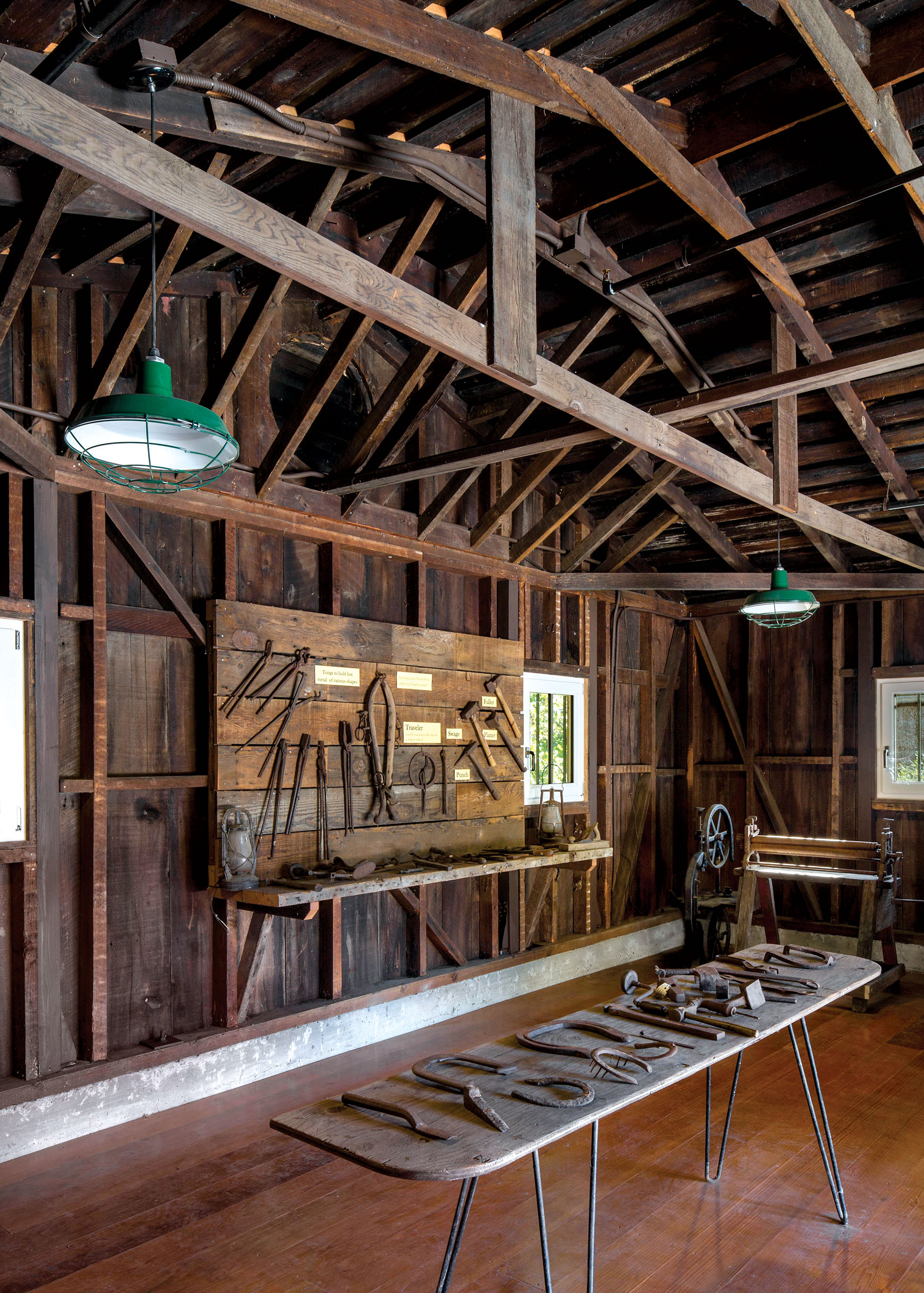
[Photo: David Waklely]
One early challenge, however, was inescapable. In order for the building to fit the landscape, it had to have a lot of western exposure in the front, where guests would enter. And that meant a lot of heat gain. “That side had to feel open and inviting yet block heat,” Siegel says. To solve this issue, the team designed a deep porch to shade the building entrance, positioning the classrooms behind it, where they can open out into the porch, extending the learning space and creating an airy, sunlit feel.
Perhaps the biggest technological feat of the project also turned out to be the center’s most valuable green teaching tool—the butterfly roof. “The roof is shaped to capture water and funnel it down into a cistern. Kids can actually watch this process on a rainy day. The roof shape also allows PV panels to be placed in the best way possible in order to capture sunlight despite being on the north side of the building.”
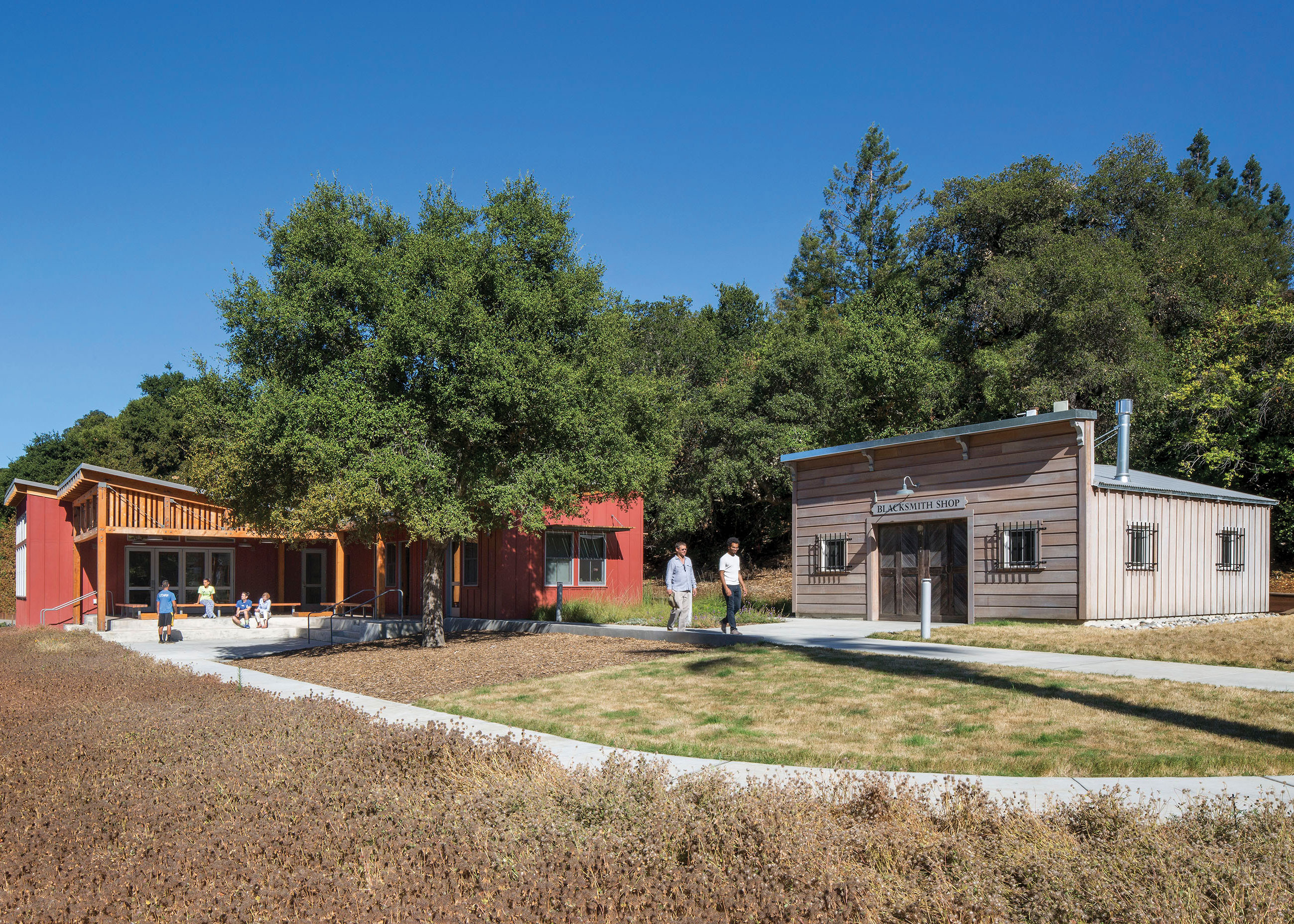
[Photo: David Waklely]
With PV panels supplying two-thirds of the building’s energy requirements, air conditioning was a big issue. Although Siegel & Strain always tries to stay away from air conditioning and its carbon footprint, with the scope of this project and budget, as well as the area’s hot climate, they knew they couldn’t get away with using air circulation alone. So they turned to a system that uses a very efficient air source heat pump, using it for both radiant heating and cooling.
Like many public building projects, the McClellan Ranch project had a limited budget, but with a bevy of sustainable design and technological options, it was never limited in potential. Opened in 2015, the project met its goals and stands as a testament to what even the smallest public projects can do both for their communities and the many future generations who will pass through their doors, inspired.
- SIZE: 2,165 square feet
1,100 square feet of porches - COST: $1.8 million
- VISITORS: 5,266 in the first year

[Photo: David Waklely]

